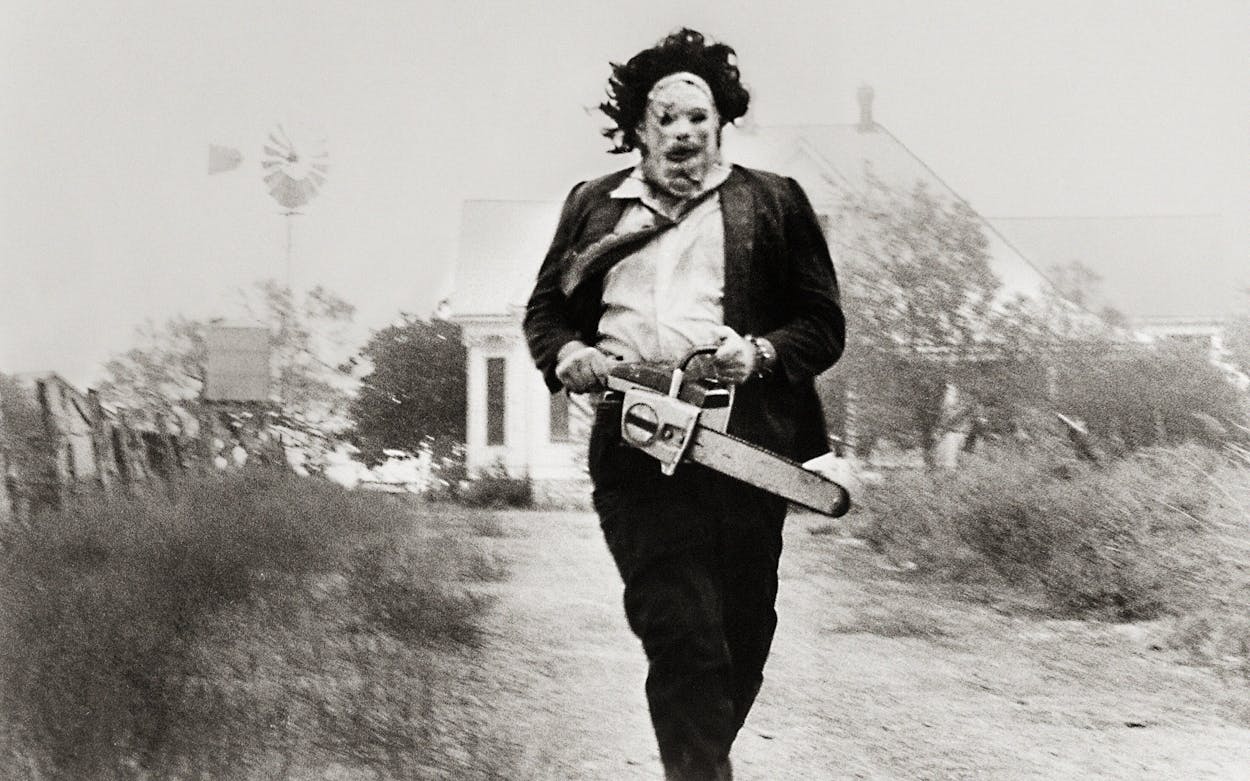John Bloom began his career with Texas Monthly in the seventies, when the magazine business was still feeling the afterglow of the New Journalism boom and editorial policies were as freewheeling as could be.
“We would routinely spend three or four months on an article, intensively researching it, and then spend a full month editing,” he told me earlier this month. “We would just assign a topic—not even a story. “ ‘Go off and do the King Ranch,’ and then you’re sent off and you don’t even know what the article is, and [you] come back four months later. I was from that era.”
But Bloom’s career took an unexpected turn when his B movie–loving alter ego, “Joe Bob Briggs,” became a full-time job in the eighties, leading him to spend a decade hosting the cable series Joe Bob’s Drive-in Theater, along with playing bit parts in movies such as Casino, Face/Off, and Great Balls of Fire! When Bloom returned to the magazine in 2004 to write a history of The Texas Chainsaw Massacre, he hadn’t realized how much the magazine business had evolved since his Texas Monthly heyday.
“I assumed it was the same thing, and so when I turned in my draft, I was told that it was too long, and we didn’t know how to cut it up,” he said. The magazine’s then-editor, Evan Smith, saw that he had a special story on his hands, so he cleared the way to run Bloom’s 13,000-word masterpiece in the November issue.
It wasn’t the only surprise for Bloom in the reporting process. “When I started out, I thought it was going to be an article about how everybody was upset that the movie had ruined their life,” he said. “But what it turned out to be was a story about the history of Austin at a particular time when Austin was changing.”
Austin in the seventies, according to Bloom, was a wild place. Director Tobe Hooper was only the second film student to enroll at the University of Texas. Warren Skaaren, the first director of the Texas Film Commission, helped secure financing from a network of good ol’ boy politicians who intermingled with the city’s hippie culture, bringing aspiring actors and filmmakers into the orbit of weekly poker games frequented by political players at the Capitol. (The Texas Chainsaw Massacre’s star, Marilyn Burns, was working for the Texas Film Commission when she learned about the role.) It wasn’t the sort of film people were making in Hollywood or New York.
Accordingly, The Texas Chainsaw Massacre was condemned upon its release—not just by the sort of puritanical forces one might expect to oppose the movie that birthed the slasher genre, but also by the sort of überhip New York horror buffs who might have embraced it under other circumstances. I asked Bloom why. “The reason New York intellectuals hated the movie was not the word ‘chainsaw,’ and it was not the word ‘massacre,’ ” he said. “It was the word ‘Texas.’ ”
Of course, hindsight changes how everything is perceived, and Bloom said that critics did eventually give the film its due—when a big-budget remake came around in 2003, leading many of those who had initially reviled the movie to declare it a classic that Hollywood was sure to butcher. “Then you could talk about it with your friends,” Bloom said. “Once you have the big-budget remake, you’re okay.”








